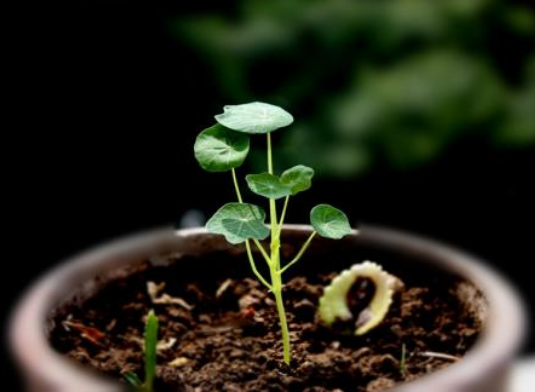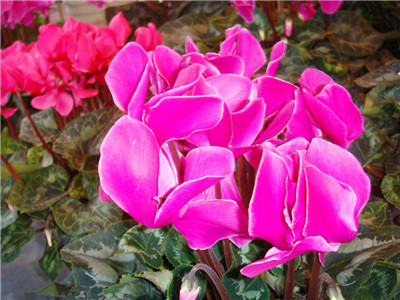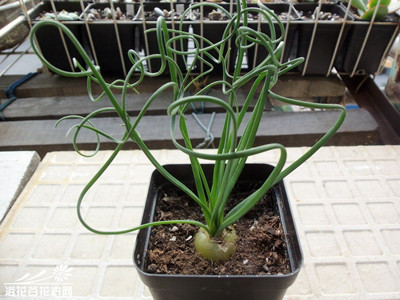Cutting methods of Clematis paniculata
Golden lotus can not only be sown, but also can be cut. As a matter of fact, there is nothing special about the cutting method of Clematis paniculata, which is almost the same as other flowers and plants, and even has a higher survival rate than other flowers and plants. Let's take a look at the basic steps of cutting.
1. Selection of utensils and media
Cuttings can choose small-point utensils, so it is easier to control the humidity of the medium, it is not easy to appear rotten roots, it is recommended to use a plastic water cup, as for the media, it is relatively broad, peat, vermiculite, perlite, basically a general configuration.
2. The cutting time of Clematis paniculata
The choice of time is very important for successful cutting. according to the investigation of the success of Huayou cuttage, it is found that the success rate of cuttage in May, October, November and December is very high, and it has not been tried in other months, but according to the feedback of Huayou, as long as the temperature is above 18 degrees Celsius, the success rate is very high.
3. Selection of branches
Cut off about 5-7 cm of terminal bud branches and cuttings. Generally speaking, the rooting time is about 1 week. Place the cuttings in astigmatism to keep the soil moist, but do not accumulate water.
Type tens of millions of words, not as good as a picture, the following is the process of cutting, flower friends can imitate cutting, it is very easy!

2. Lighting:
Dry golden lotus likes sufficient sunshine and is not resistant to shade. It should be cultivated in a sunny place in spring and autumn, properly shaded in summer and in a cool and ventilated place in midsummer. At the same time, the flowers and leaves of Clematis paniculata have strong phototaxis, and their positions should be changed frequently when they are cultivated or ornamental to make them grow evenly.
3. Watering:
Due to the pulp inside the branches, Hanjinlian likes to be wet and afraid of waterlogging, and the soil moisture is kept at about 50%. During the growth period, small water should be watered frequently, watering every 2-3 days in spring and autumn, watering every day in summer, and spraying water on the leaves in the evening to maintain high humidity.
4. Temperature:
Potted plants in northern China need to be moved indoors or in greenhouse in winter, and the lowest temperature should not be lower than 10 ℃. The suitable temperature for growth was 18-24 ℃, it was not easy to blossom at high temperature in summer, and the growth was inhibited above 35 ℃.
5. Fertilization:
If fertilizer and water are not properly managed during the growing period, there will often be bad phenomena such as long nodes and yellow leaves, small stems and leaves, or luxuriant branches and leaves and few flowers. Generally, the application of basic fertilizer for young children and thin fertilizer and water once a month can promote flowering and luxuriant. Stop fertilizing in the heat of summer.
6. Diseases and insect pests:
Clematis paniculata is vulnerable to aphids and whitefly and needs to be controlled manually or by spraying frequently. Ripe fruits will fall off naturally and should be harvested in time when the pericarp is white and not yet dry, and then dried and stored without threshing.
The Culture method of Clematis paniculata
Clematis is a rare wild plant of the family Nelumbo nucifera and Nelumbo nucifera. It is an annual or perennial climbing plant. Plant height 30cm-70cm. Basal leaves long stipitate, leaf blade pentagonal, triplicate, bifid with a few lobules and acute teeth. Flowers solitary or 2-3 in Cymes, sepals 8-19, yellow, elliptic-Obovate or Obovate, petals as long as sepals, narrowly striate. The leaves are fat and beautiful, and the flowers are purple, orange and creamy yellow. Golden Lotus is twining its stems and its leaves are shaped like bowl lotus. When the milky yellow flowers are in full bloom, such as butterflies, they are an important ornamental flower in summer. The flowers of Clematis paniculata can be used as medicine. Its tender shoots, buds and fresh seeds can be used as spicy seasonings.
The sandy loam soil rich in organic matter should be used for the cultivation of Clematis paniculata, and the PH value is 5-6. Fertilization is generally applied every 3-4 weeks during the growing period, and the soil should be loosened in time after each fertilization to improve ventilation and facilitate root development.
Dry golden lotus likes to be wet and afraid of waterlogging, and the soil moisture is maintained at about 50%. During the growth period, small water should be watered frequently, once every 2-3 days in spring and autumn, every day in summer, and spraying water on the leaves in the evening to maintain high humidity.
After flowering, it is necessary to reduce watering to prevent branches from growing. If excessive watering and poor drainage, the roots are vulnerable to wet rot, and the light ones with yellow leaves fall off heavily and the whole plants wilt and die.
Handelia lanceolata likes to have plenty of sunshine and is not resistant to shade. It should be cultivated in a sunny place in spring and autumn, properly shaded in summer, in a cool and ventilated place in midsummer, entered in the middle of October in the north, kept in a sunny place for maintenance, kept at room temperature for 10 ℃ and 15 min, and fertilizer and water were properly controlled. At the same time, the flowers and leaves of Clematis paniculata have strong phototaxis, and their positions should be changed frequently when they are cultivated or ornamental to make them grow evenly.
The method of sowing or cutting is used for propagation. The sowing was carried out in the greenhouse from August to October. Before sowing, the seeds were soaked in warm water of 40-45 ℃ for 24 hours and kept for 18-20 ℃ after sowing. The seedlings could emerge in 7-10 days and were planted in the planting pot in May of the following year. The cuttings were carried out from April to June, and the young stems were selected as cuttings, the lower leaves were removed, shaded and kept humid, and rooting could take place in 2-3 weeks. With the growth of stem vines, bamboo should be used in time to set up the stand and bind the branches. Topdressing once every 10-15 days, sufficient moisture and high air humidity should be maintained throughout the growth period.
- Prev

What causes the rotting roots of cyclamen and how to prevent it?
In the cultivation of cyclamen, the rotting root problem of cyclamen has perplexed the breeders. Preventing cyclamen tuber from rotting is an important link in the success of cyclamen cultivation. The causes of cyclamen tuber rot are in addition to low temperature and bacterial infection.
- Next

Propagation of spring grass and control of diseases and insect pests
Reed grass can be propagated by means of ramet and sowing. 1. Ramet: the pot can be changed in combination with autumn. The method is to break off the small bulbs sprouting around the big bulb and plant them in the culture soil, no matter whether they have roots or no roots. 2. Sowing: this method is suitable for mass propagation, carried out in autumn, and covered with thin soil after sowing.
Related
- Fuxing push coffee new agricultural production and marketing class: lack of small-scale processing plants
- Jujube rice field leisure farm deep ploughing Yilan for five years to create a space for organic food and play
- Nongyu Farm-A trial of organic papaya for brave women with advanced technology
- Four points for attention in the prevention and control of diseases and insect pests of edible fungi
- How to add nutrient solution to Edible Fungi
- Is there any good way to control edible fungus mites?
- Open Inoculation Technology of Edible Fungi
- Is there any clever way to use fertilizer for edible fungus in winter?
- What agents are used to kill the pathogens of edible fungi in the mushroom shed?
- Rapid drying of Edible Fungi

